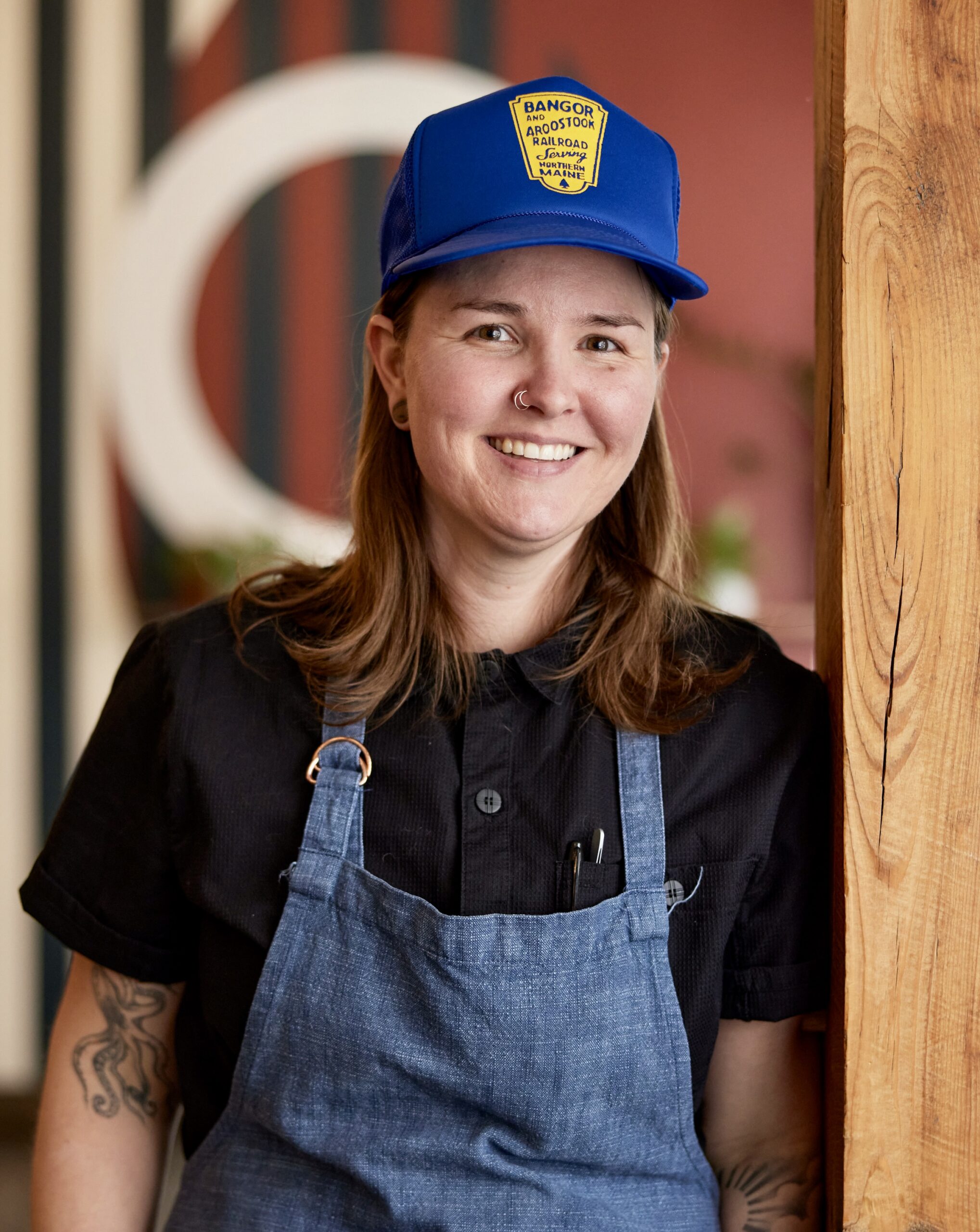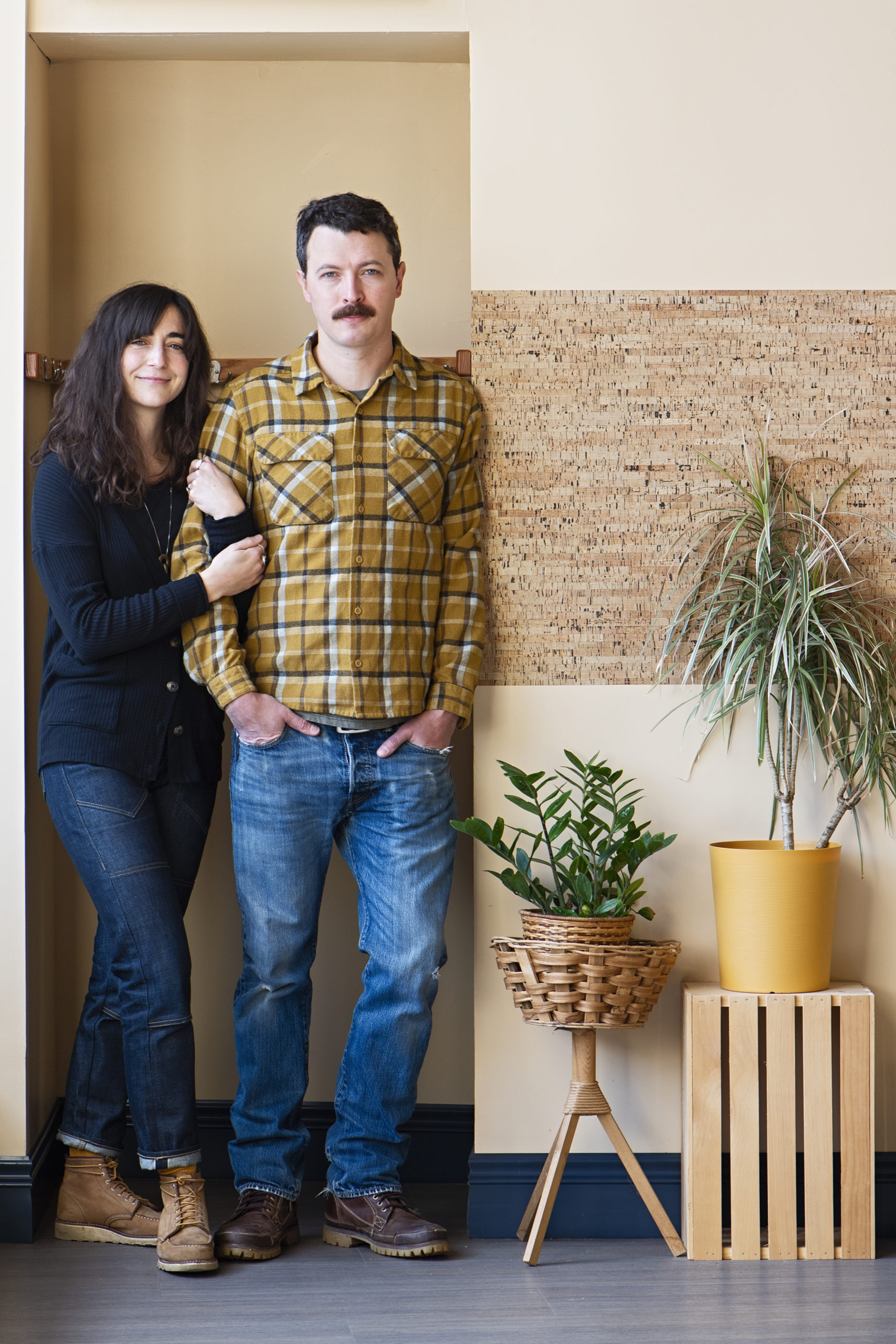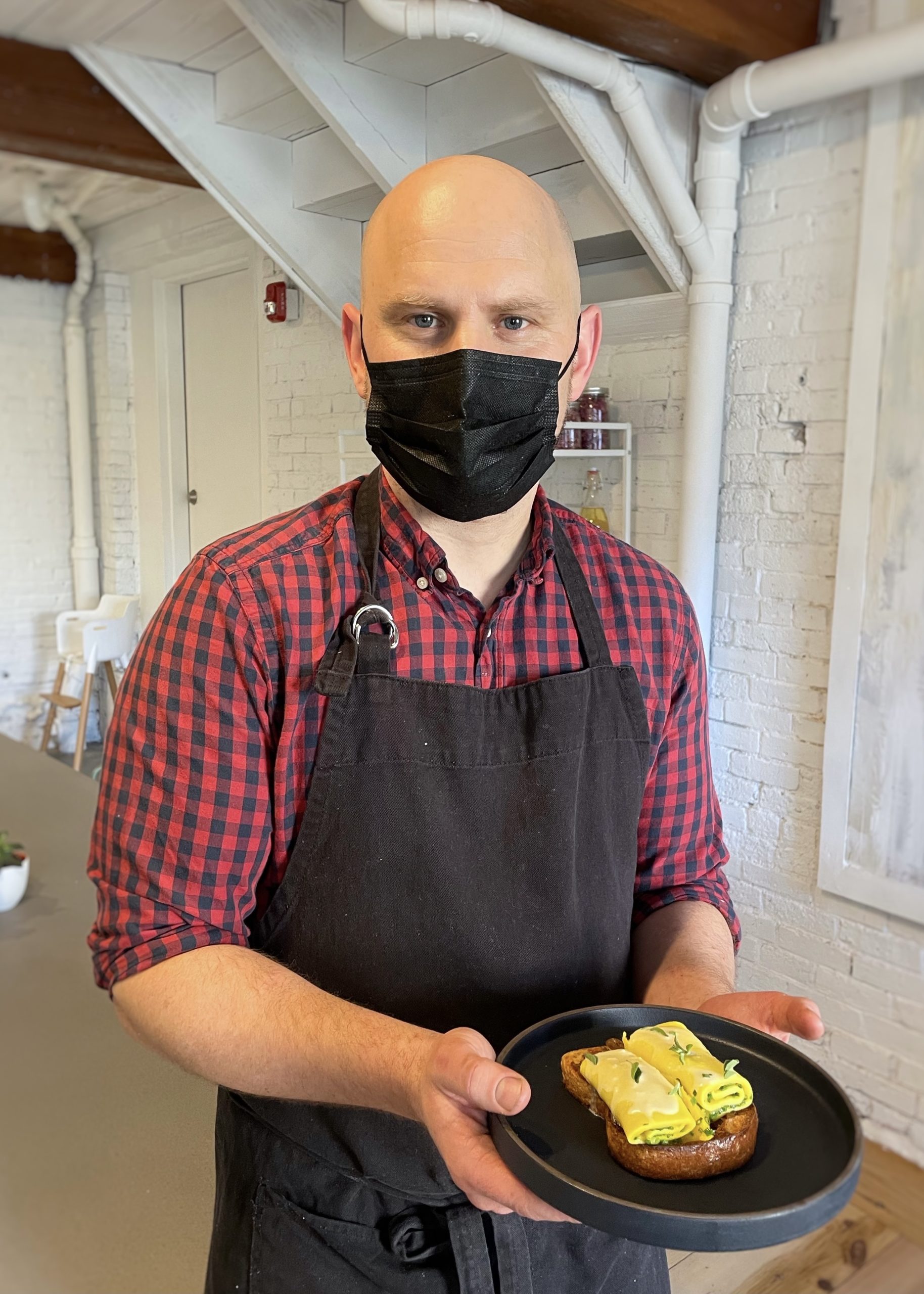Welcome to the January 2024 edition of My Kitchen, Their Table, an interview series with the chefs and culinary professionals who work hard to satisfy our small city’s big appetite. This month we’re featuring an interview with Barak Olins the founder and head baker of ZUbakery. Visit our instagram on next week, to see Barak and his team at work at the bakery.
 A boat builder turned bread maker, Barak Olins is a master of craftsmanship and tradition. Originally from Tennessee, he moved to Rockport, Maine, to build boats. Eventually, his love affair with cooking became his profession when he and two partners opened Cafe Uffa (now the location of El Corazon in Longfellow Square), in 1995. In their quest to prepare everything from scratch, his journey in breadmaking took off.
A boat builder turned bread maker, Barak Olins is a master of craftsmanship and tradition. Originally from Tennessee, he moved to Rockport, Maine, to build boats. Eventually, his love affair with cooking became his profession when he and two partners opened Cafe Uffa (now the location of El Corazon in Longfellow Square), in 1995. In their quest to prepare everything from scratch, his journey in breadmaking took off.
In 2000, Olins launched ZUbakery out of a barn in Freeport equipped with a hand built woodfired oven and age-old techniques. From milling locally-grown grains to proofing at ambient temperature, his bread is as traditional as it gets. “I’m not an innovator. I’m not trying to reinvent bread. I don’t believe I can create a loaf of bread better than those before me,” he humbly explains.
For over two decades, he sold exclusively at farmer’s markets in Brunswick. On Fridays, the day before a market, he would sleep in the barn on a cot after he loaded the final batch of bread into the oven. The following day, after only a few hours of sleep, he would haul nearly 180 pastries and 300 loaves of bread to the market. “It was romantic for years, and then I said, I can’t do this anymore,” he says, laughing.
In 2022, Olins went from barn to boulangerie when he took over a space at 81 Clark Street in Portland’s West End. After many months of renovations, he opened the doors on October 21st, 2022. Inspired by a 1930s French bakery, it is chic, minimalist, and intentional. The 650-square-foot space has an open kitchen separated from the retail area by a narrow marble countertop and paned window — a cozy spot to watch your daily bread being made. Like all things Olins, there is beauty in its simplicity and practicality — from the wood shelves piled high with willow baking baskets to the proofing trough and work tables he built himself.
Unlike most bakeries, the counter at ZUbakery is far from fully stocked at the time of opening. Rather, Olins and his small, talented crew bake throughout the day. His menu, or rather schedule, begins at 9 a.m. with pastries served alongside coffee and tea. From late morning to early afternoon, they load the shelves with bread. Then, pizzettes and focaccia hit the counter until close at 5 p.m. This schedule allows the baking crew to start their day at a reasonable hour (if you consider 5 a.m. reasonable) and allows you to get an exceptionally fresh, even warm loaf of bread. Also for sale are housemade biscotti and granola, local honey, olive oil, ceramics made by Olins’ wife, Mimi, and a small selection of thoughtfully sourced wine.
Continue reading to learn more about Olins’ “unfussy utilitarian” approach to baking, where he’s ordering takeout from, and which brewery you’re most likely to find him at.
THE INTERVIEW
AR: How would you describe your baking style?
BO: I don’t make bread with a lot of other things in them. They’re fairly simple and rustic. I’m really interested in reclaiming that word because now you can go to a grocery store and buy artisanal, rustic bread, but that word rustic really means something. To me, it means handmade, regional, unfussy, and utilitarian.
AR: Why do you mill grains in-house?
BO: For one, it gives me the opportunity to work directly with the farmer. Also, flour loses flavor and oxidizes if it sits around for a long time. Eventually, the germ oil can go rancid. Freshly milled flour adds a layer of flavor. The range of offerings at my bakery is relatively small, and I want everything I do to be done as well as possible, so having control over the wheat that I use and the flour that I have is really important.
AR: What is your favorite pastry to make?
BO: I just love scones. I think they’re so good. I make an Irish scone with currants. They’re really simple. The trick is how you handle it. You don’t want to overwork the dough.
AR: What about your favorite bread?
BO: I make one called pavé. That’s French for a paving stone. It’s so good for dipping in olive oil or with a salad. The loaf is large, somewhat rectangular, and slightly flat. I usually make it with buckwheat, whole wheat, and white flour.
AR: What are the ingredients in pavé?
BO: Flour, water, salt, and starter. A bread recipe is more accurately a baker’s schedule. It’s not so much the ingredients as it is your technique of working the dough, how long you’re fermenting it, how you shape the loaf, and, of course, the wheat you’re using. One schedule that works for many bakers is cold fermentation. Sometimes shaped loaves cold-ferment in a cooler overnight. I don’t do that. My bread, with few exceptions, is always fermented at ambient temperature. Sometimes, I use refrigeration to slow it down, but I aim to do everything at room temperature. I don’t like relying that much on technology, and I like being more in touch with the dough as it’s going along.
AR: What is one of your favorite dishes in Portland?
BO: At Yosaku, they still make soba noodles in-house daily. For me, a bowl of cold soba noodles with dashi, wasabi, and grated daikon is magical. It’s not innovative. It’s just perfect. There’s no flavor that doesn’t need to be there. And it’s beautifully presented. That’s my dish.
AR: What is one of your go-to spots in Portland?
BO: I really love Bahn Appetit, the little takeout spot on Cumberland Avenue. They’re excellent. Everything I’ve had there is delicious. The Bahn mi is really good. I love honest, straightforward cooking. I don’t need to be surprised by combinations.
AR: Where did you eat one of your most memorable meals?
BO: One of my favorite dinners ever was at Bresca. At the time, I didn’t know who Krista Kern Desjarlais was. My wife and I sat at the bar looking into the kitchen. It was a sweet, cozy place with a small menu. Everything was delicious — the food, the wine. We were totally in love with it.
AR: Where do you go for a drink?
BO: I love Bunker Brewing. It’s a little off the beaten path. It’s on the backside of a building with some picnic tables. It reminds me of my favorite parts of what Portland was like twenty years ago. And the beer is so good. I’m not a big cloudy IPA drinker. I like their Machine Pilz and Salad Daze IPL. The one that transports me to an Irish or English-style bitter is the Chickadee nitro beer.
This interview has been edited and condensed for clarity.
Previous editions of My Kitchen Their Table have featured Courtney Loreg, Chad Conley Atsuko Fujimoto, Matt Ginn, Jordan Rubin, Cara Stadler, Thomas Takashi Cooke, Ilma Lopez, Bowman Brown, Brian Catapang, Kelly Nelson, Lee Farrington & Bryna Gootkind, Jake and Raquel Stevens, Tina Cromwell, Nathaniel Meiklejohn, Evan Atwell, and Mimi Weissenborn.
The My Kitchen Their Table series is brought to life by food writer Angela Andre Roberts, and the generous sponsorship by Evergreen Credit Union and The Boulos Company.








